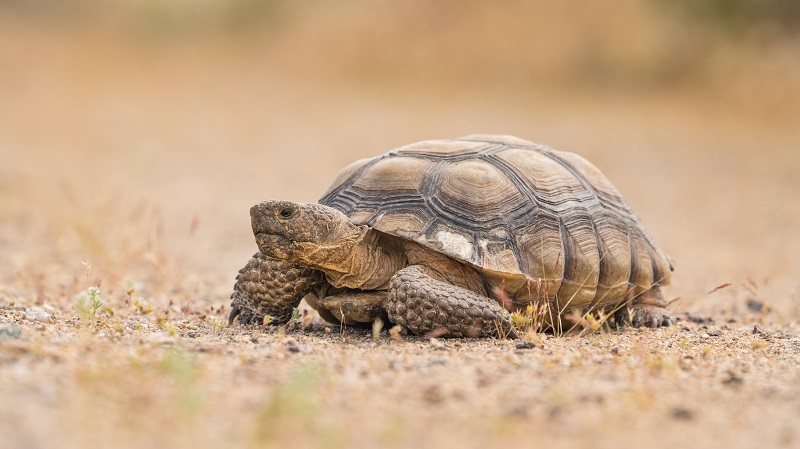
Desert tortoise (Gopherus agassizii) on the sandy desert floor of the Mojave Desert
Photo credit: Clayton Harrison/Shutterstock
The California Department of Fish and Wildlife (CDFW) will be conducting a status review for the desert tortoise to inform the California Fish and Game Commission's decision on whether to uplist the species from threatened to endangered under the California Endangered Species Act (CESA). More details about the uplist proposal and CDFW's request for public comments may be found in our CDFW newsletter. As part of this process, the CNDDB would like to encourage anyone who has observed desert tortoises to submit their findings to us before August 1st.
The desert tortoise (Gopherus agassizii) is found in the Mojave Desert, the western Sonoran Desert and the southern Great Basin Desert. They spend much of the year underground in burrows to shelter from extreme temperatures. When they do emerge, they feed on native forbs and grasses. Their densities have declined drastically in many places in California in the past 20 years. Threats include habitat fragmentation, development in these desert regions, increasing drought due to climate change, invasive grasses out-competing food items preferred by tortoise, disease, predation by coyotes and ravens, and human-caused mortality.
We need your help in better understanding the status of the desert tortoise. If you have ever seen desert tortoises in the wild, submit your findings to us through our Online Field Survey Form. Together, we can help the Fish and Game Commission make an informed decision on the uplisting proposal for the desert tortoise.